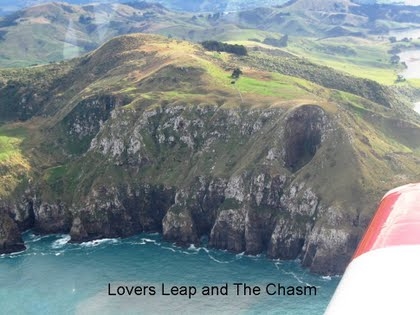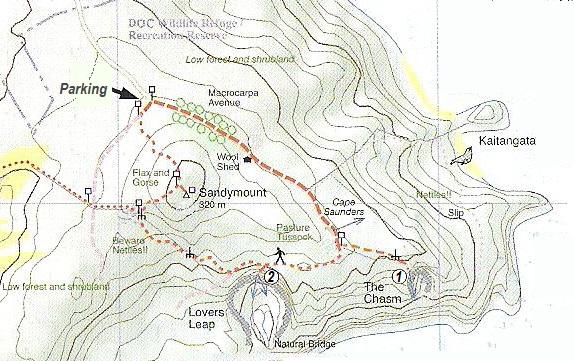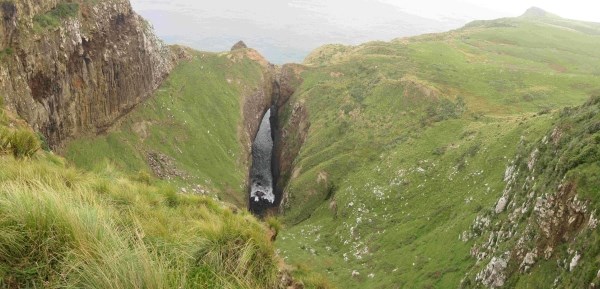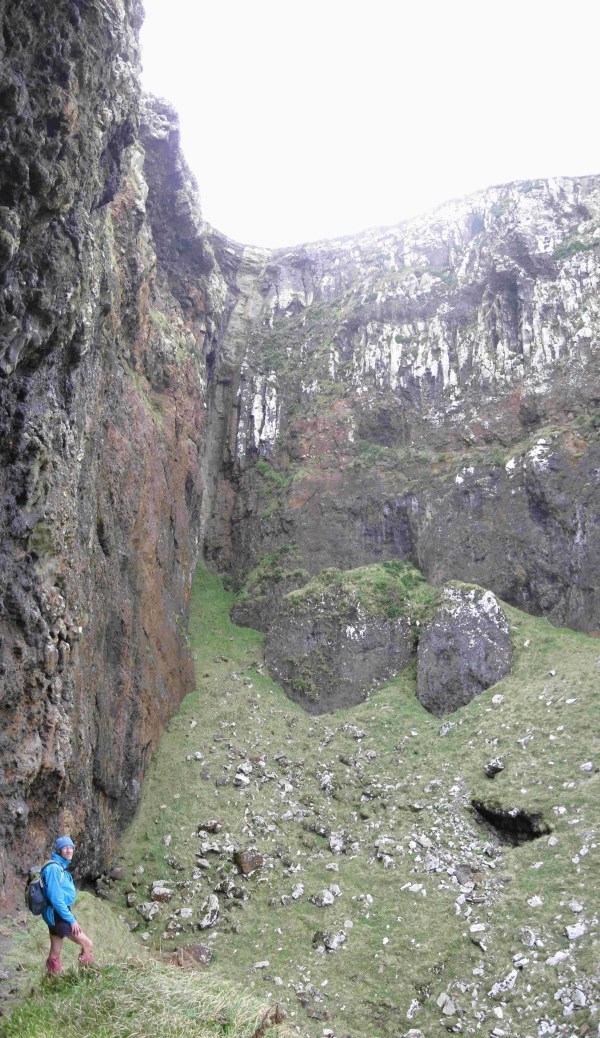Scenic Sandymount (Dunedin, Otago) Multi-Cache
Scenic Sandymount (Dunedin, Otago)
-
Difficulty:
-

-
Terrain:
-

Size:  (regular)
(regular)
Please note Use of geocaching.com services is subject to the terms and conditions
in our disclaimer.
A round trip to two geological features at Sandymount - The Chasm and Lovers Leap. The walk is 2.3 km long with a climb of 120 m and will take about an hour.
This is a Department of Conservation reserve. Dogs are not permitted. Part of the reserve is leased for grazing, but the public are allowed to wander at will.
THE VIEWING PLATFORMS AT THE CHASM AND LOVERS LEAP HAVE BEEN REMOVED.
There are UNPROTECTED CLIFFS at each waypoint.
WARNING: Waypoints are not suitable for children.
For this cache you only have to visit the red DoC warning signs at each waypoint. These are a safe distance away from the cliffs. Stay well away from the cliff edge at all times.
NOTE: The track to the Chasm and Lovers Leap is closed for lambing from 1 September to 15 October each year. This cache is unavailable during that time.
At the final, you are looking for a black 1.6 litre screwtop hidden in a safe and obvious place beside the track. Please ensure that it is rehidden completely out of sight.

Photo from the informative Otago Rock & Mineral Club website.
The coordinates above are for the carpark at the end of Sandymount Rd. Park here, walk through the avenue of macrocarpa trees and follow the marked track to the Papanui Inlet viewing platform. Then continue across paddocks (no marked track, one fence to cross) to The Chasm WARNING SIGN [1]. Find the DoC asset number on the signpost. This six digit number is IJKLMN.
It is not possible to look into the Chasm safely - please stay away from the edge of the cliff. The rock cleft here took shape when lower layers of soft volcanic rock were eroded by the sea, at a time when the sea level was higher.
After admiring the view, backtrack to the junction and follow the track to the Lovers Leap WARNING SIGN [2]. The DoC asset number on the signpost is PQRSTU.
You are able to view the natural bridge from here, but please stay away from the cliff edge. The amphitheatre of jointed basalt columns was formed by slow cooling and shrinking of the molten rock. You'll see several fixed chains dangling over the band of crumbly rock below the "organ pipes", which are used to gain access to the climbing routes on this rock face - the crag is described at climbnz and rockclimbing.com. If you hear eerie wailing coming from the sea below, don't worry - it is seals calling.
Some arithmetic is needed to find the coordinates of the final cache at S45 53.ABC E170 40.DEF
A = I + Q
B = N + T
C = J + U
D = L + Q
E = N + U
F = J + S
Checksum: A + B + C + D + E + F = 23
Continue on the poled track to return over Sandymount to the carpark. The track is eroded and muddy in places. It takes you through flax planted as part of yellow-eyed penguin habitat protection and, after climbing a stile over a fence, an attractive area of regenerating coastal forest including mahoe, fuschsia and some impressive ongaonga (tree nettles - luckily not on the track - DON'T touch!).
At each junction the way back to the carpark is clearly signposted. We recommend that you also take the short side trip up to the summit cairn and plane table on the top of Sandymount. It's a spectacular view on a fine day.

Track map from Antony Hamel's "Dunedin Tracks and Trails"
These impressive cliffs at Sandymount are remnants of the first main eruptive phase of the Dunedin Volcano, 13 million years ago. A thesis Eruptions and deposition of volcaniclastic rocks in the Dunedin Volcanic Complex, Otago Peninsula includes a time sequence picture showing development of the volcano and a volcanological map (although the point marked "Lovers Leap" is actually Kaitangata). The first eruptions were explosive underwater "Surtseyan" volcanoes on either side of Sandymount, one in Sandfly Bay and the other in Hoopers Inlet. Sandymount itself was also an eruptive centre. What we are left with at Sandymount is a layer of hard basaltic rocks overlying a softer layer of basalt, agglomerate and bedded tuff.
In the 10 million years since the Dunedin volcano became extinct, streams eroded away the centre of the volcano. A rise in the sea level flooded these valleys to form the Otago Harbour and Hoopers and Papanui Inlets, making the Otago Peninsula into an island and eroding the Sandymount cliffs. Sand moved northwards by the Southland Current formed the South Dunedin sandspit and the sand flats and dunefields along the Peninsula. The Maori name for Sandymount is Pikiwhari (apparently a type of plant); it's obvious how it got its European name.


Information:
Department of Conservation Peninsula Tracks: Visit link
Dunedin walks: Download pdf
The Natural History of Southern New Zealand - Darby, Fordyce, Mark, Probert & Townsend
The Dunedin Volcano - Jane Forsyth
Dunedin Tracks and Trails - Antony Hamel
The Otago Rock & Mineral Club website
Dunedin Geological Map
(Hmmm... they're also useful if you're doing some seriously talented educationalist's gnarly albeit nice caches...)
Additional Hints
(Decrypt)
onfrbscbfg